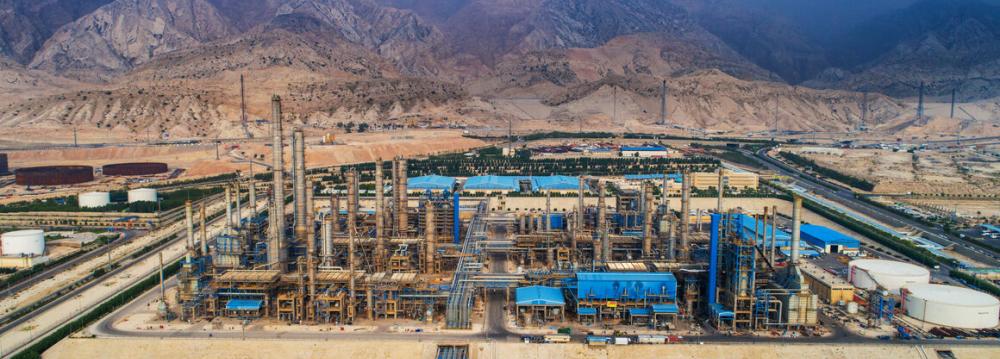In terms of weight, 98% of the catalysts used in the oil industry are produced by Iranian manufacturers, managing director of Petrochemical Research and Technology Company said.
Pointing out that 99 catalysts, activators and adsorbents are used in the oil industry, Majid Daftari said: “85 ones of these items are being produced by local companies, and the remaining 14 ones either have a very small amount of consumption in the country or their production is not economically justifiable,” he was quoted as saying by the Oil Ministry news service Shana.
About 37,000 tons of catalysts are consumed in the oil industry of Iran annually and considering the rising demand, the PRTC provides all its facilities for knowledge-based companies and researchers to help increase the output of the strategic items, he added.
Domestic catalyst producers and knowledge-based firms have indigenized several catalysts used in the refining, petrochemical and gas sectors for hydrogen processing, hydrocracking, dry reforming of methane, isocyanates production, sulfur recycling and removing impurities like mercaptan, sulfur and other environmentally-unfriendly materials from gas condensates.
A catalyst is a substance that speeds up chemical reaction but is not consumed by it. Most solid catalysts are metals or oxides, sulfides and halides of metallic elements and semi-metallic elements such as boron, aluminum and silicon.
PRTC is the mainstay for research and production of technology in all petrochemical fields. It creates tech security and contributes to economic growth by exporting knowhow.
Catalyst consumption is rising and local companies are improving their R&D not to fall behind foreign competitors.
The indigenization of all catalysts will help save about $1.15 billion annually, which would otherwise be spent on importing them.
The use of indigenized technical knowhow, especially in the field of catalysts, reduces cost in the petrochemical industry by 30%.
The National Petrochemical Company's short- and long-term goals to raise output cannot be attained unless value chain completion in the lucrative sector is accelerated with the help of local catalysts.
Due to the multiplicity of catalysts used in petrochemical complexes, a significant part was imported up until recent time, but the US sanctions made it difficult to purchase them from international markets, hence local firms have redoubled efforts to indigenize as many catalysts as possible.
Export of Catalysts
In addition to being used domestically, “indigenized catalysts are exported to countries in the region and successfully used in their complexes,” Daftari noted.
In related news, the managing director of the National Petrochemical Company referred to the export of Iranian catalysts to Russia and said: “Iranian catalysts have been successfully used in Russian companies”.
Regarding their quality, Iranian catalysts can be compared to their European counterparts, Shana reported Morteza Shahmirzaei as saying.
One ton of Iranian catalyst is being used in Russian petrochemical complexes that have also placed new orders to purchase more domestically-made catalysts.
This is the result of negotiations that have been held since March with Russian delegations for the export of Iranian catalyst to Russia.
Earlier this year, NPC signed deals with Russian private petrochemical firms, including SIBUR, to provide them with their required catalysts. SIBUR is one of the world’s fastest-growing petrochemical players and Russia’s leading polymer and rubber manufacturer.
Global Market
According to a recent study published at Precedence Research website, the global catalyst market size was exhibited at $37.3 billion in 2021 and it is expected to hit around $61.82 billion by 2030 with a registered CAGR of 5.77% during the forecast period 2022 to 2030.
The demand for the catalysts is escalating owing to the surging applications in polymers and petrochemicals, petroleum refining, and chemical synthesis. Catalysts is used in various processes and helps in cost-saving, yield improvement, process optimization, and energy saving in the manufacturing sector.
Moreover, there is a high demand for the environmental catalysts as it helps the manufacturers to meet the stringent regulatory mandates pertaining to carbon dioxide, NOx, and Sox emissions. The rising carbon emission and subsequent climate changes has forced the government to shift towards renewable energy sources and the rising government initiatives towards this direction is stimulating the manufacturers to shift towards alternative fuel. The rising adoption of alternative energy and fuel such as biodiesel and shale gas fuel is expected to boost the demand for the catalyst in the foreseeable future.
Furthermore, the manufacturers are seeking for value addition to their feedstock by manufacturing value-added chemicals such as polyolefins and methanol. This has significantly fostered the demand for the catalysts in the petrochemical and chemical applications. The industrial usage of chemicals is directed towards cost reduction and scarcity of the catalytic types based on rare metals via the metal reclaiming process development.
The growing focus on adopting more cheaper and abundant base metal catalysts and avoid the use of rare metals in the metal reclaiming process is expected to spur the growth of the global catalyst market. The rising energy demand owing to the rapid industrialization and rapid urbanization of rural areas across the globe is significantly boosting the demand for the catalyst in oil refining and is expected to foster the market growth during the forecast period.


